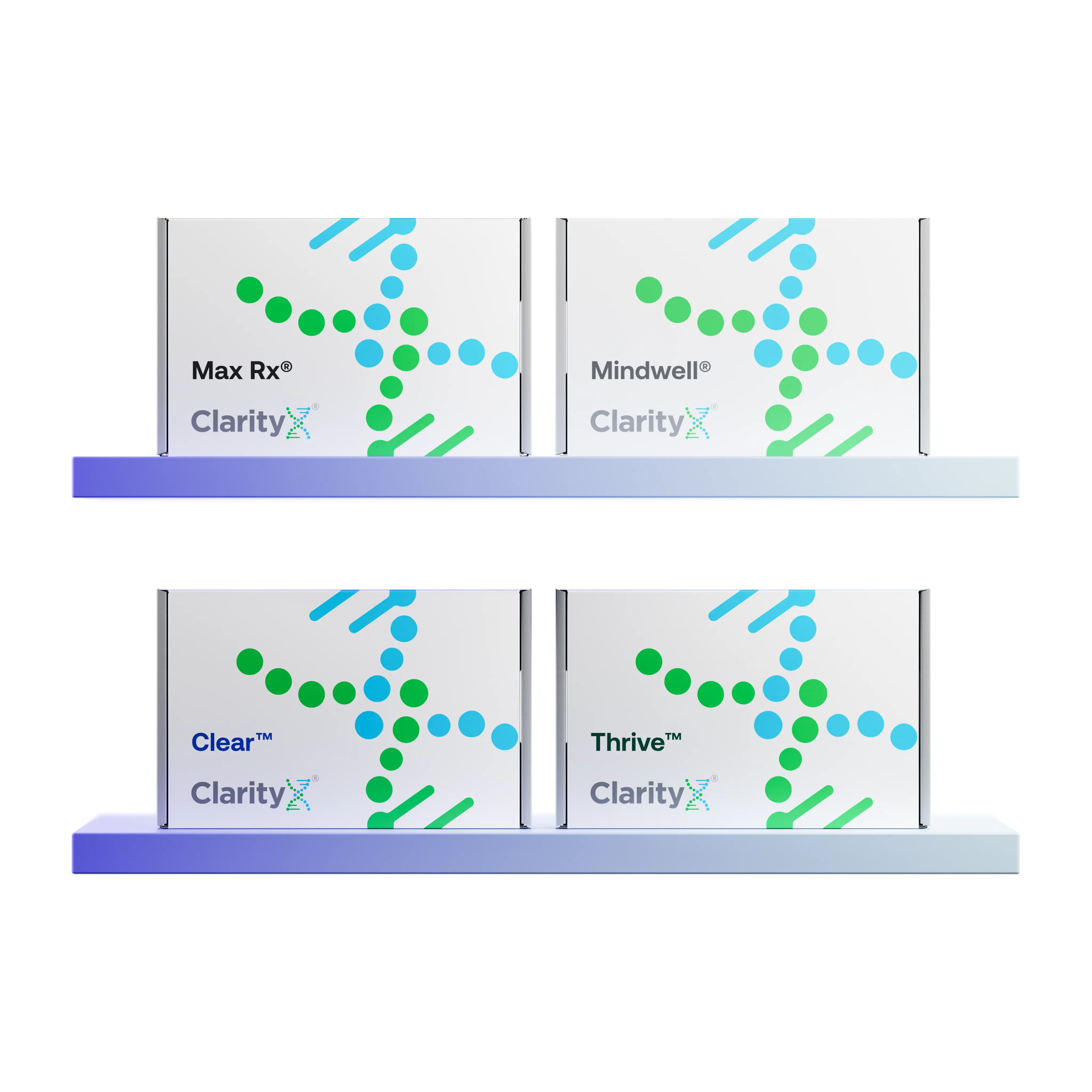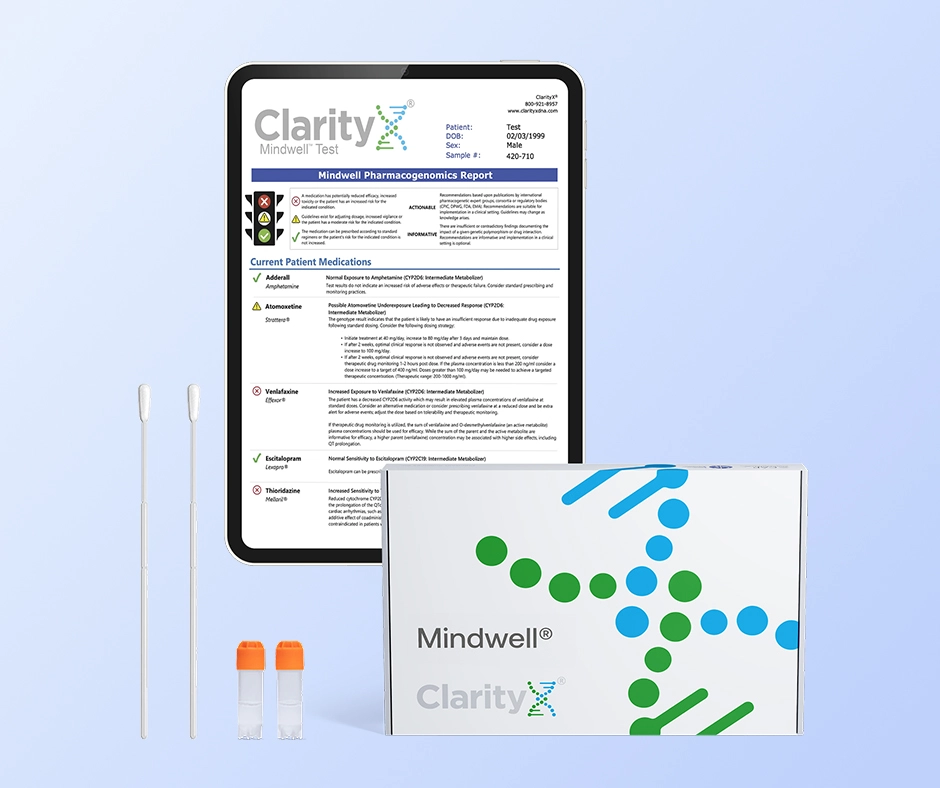Key Highlights
- Methylation is an important process in the body. It adds a methyl group to molecules like DNA and proteins.
- This process helps control gene expression. Methylation can turn genes ‘off.’
- Keeping a balanced methylation status is essential for good health. It is important for many functions, from cell division to immune system function.
- Many things can affect methylation, such as diet, lifestyle, the environment, and genes themselves.
- Learning about methylation can help us better understand a person’s health and lead to personalized health plans.
Introduction
In the busy world inside our cells, there is an important process called DNA methylation. This process helps control what genes do. It works by adding a methyl group to our DNA. Think of it as a switch that can turn genes "on" or "off" without changing the actual DNA sequence. DNA methylation is key for gene expression, affecting many biological processes that can greatly impact our health.
Understanding Methylation: An Overview
Imagine your DNA as a big library of genes. Each gene has instructions for building and maintaining your body. Methylation works like a librarian, adding sticky notes, called methyl groups, to some genes. This helps decide if the genes are read and turned into proteins.
This complex process is important for normal cell function. It affects cell differentiation, helps with embryonic development, and even impacts how we age. When methylation does not work correctly, it can cause various health problems, highlighting the importance of keeping methylation balanced.
Defining Methylation in Biological Terms
Methylation is simply adding a methyl group (CH3) to a molecule. While this may seem minor, it can have important effects.
In our DNA, methylation usually happens at certain spots where a cytosine nucleotide is followed by a guanine nucleotide. These spots are called CpG dinucleotides. CpG sites often gather in areas called CpG islands, which are usually near gene promoters.
When methylation happens in these CpG islands, it can turn off gene expression. This is important because it stops transcription factors from attaching. Transcription factors are the proteins that start gene transcription. So, methylation works like a "mute" button to keep the gene from being expressed.
The Importance of Methylation in Human Health
Methylation is not a fixed process. The patterns of DNA methylation change based on different internal and external factors, allowing our bodies to adjust to various environments and body states.
For example, genomic imprinting is when certain genes are turned on or off, depending on whether they come from the mother or father. Methylation controls this process. Methylation often occurs at the promoter region of a gene, which can silence the expression from one parent while keeping it active from the other.
Correct methylation is very important for embryonic development, X-chromosome inactivation, and maintaining chromosome stability. Problems with methylation patterns can lead to many diseases, such as cancer, heart disease, and brain disorders.
The Chemical Process of Methylation
Methylation might seem easy to understand, but it actually involves many enzymes and molecules working together. A key group in this process is the DNA methyltransferases or DNMTs.
These enzymes help add a methyl group to the DNA, especially at the 5' position of cytosine bases found in CpG dinucleotides. This small change can greatly affect how accessible the DNA is. It also influences how DNA interacts with other proteins, which plays an essential role in gene expression.
How Methylation Occurs at the Molecular Level
At the molecular level, methylation is a complex process where enzymes add and remove methyl groups. This process helps regulate genes. DNA methyltransferases (DNMTs) play a key role by adding methyl groups to cytosine bases.
This addition usually happens at CpG dinucleotides, which creates methylated cytosines. Crucially, these changes can be passed down from one cell to its daughter cells during cell division. This is important for keeping the overall patterns of DNA methylation intact and cell differentiation—determining what type of cells they will be.
However, methylation patterns can change. These patterns can be modified during DNA replication and in response to different environmental or developmental signals. This flexibility allows for changes in gene expression, helping cells adapt to new conditions.
Key Enzymes Involved in Methylation Processes
DNA methyltransferases, or DNMTs, play a key role in DNA methylation. These enzymes add methyl groups to cytosine bases in DNA, mainly at CpG sites. Among the DNMT family, DNMT1, DNMT3A, and DNMT3B are very important.
DNMT1 is known as the "maintenance" methyltransferase. When cells divide, it copies existing methylation patterns to new DNA strands, ensuring that the same patterns are passed on to daughter cells.
In contrast, DNMT3A and DNMT3B create de novo or new methylation patterns. This means they can add methyl groups to DNA that has no methylation before. These enzymes are vital during embryonic development. They help determine cell fate and how cells change into different types.
Types of Methylation and Their Roles
DNA methylation is important, but DNA is not the only target. Methylation can also happen to other biomolecules, especially proteins. Each type of methylation has its own job in how cells work.
For example, histone methylation adds methyl groups to histone proteins. These proteins help organize DNA into a structure called chromatin. Histone methylation affects how easily genes can be accessed and expressed.
DNA Methylation and Its Significance
DNA methylation is very important for controlling genes. It has significant effects on human health. It does more than just turn genes “on” or “off.” It helps manage many cellular processes that are essential for our health.
One of these important processes is DNA repair. Methylation patterns can show where DNA is damaged. This guidance leads repair systems to the right spots, ensuring our genetic code stays intact. This protective action helps stop mutations, which can cause different diseases.
Also, DNA methylation helps silence transposable elements, known as "jumping genes." These pieces of DNA can change how genes work if they aren't kept under control. By keeping them inactive, methylation maintains the stability of our genome. In addition, DNA methylation manages how tumor suppressor genes work. These genes are crucial because they can help prevent cancer from developing.
Protein Methylation and Its Effects on Function
Methylation does more than just change DNA. It also affects proteins, making them behave differently and influencing many cell functions. This is called protein methylation. It adds complexity to how genes are controlled in our cells.
Histone methylation is an example of this. It adds methyl groups to histone proteins, the spools holding our DNA in storage. This change can make it easier or harder for other proteins to reach the DNA, impacting how genes are turned on or off.
By changing chromatin structure, histone methylation is key to deciding which genes are active and how much. This affects important processes like cell division and how cells react to stress.
Factors Influencing Methylation Pathways
Our genes affect methylation, but it isn't just about the DNA sequence we get from our parents. Many things inside our bodies and around us help create our unique methylation patterns. These patterns can impact our health and how likely we are to get certain diseases.
Our diet is very important because it gives our body the needed parts for methylation, including nutrients like folate, vitamin B12, and choline.
Genetic Factors Affecting Methylation
Our genes shape how methylation patterns are formed. Differences in our genes, especially those that code for enzymes in the methylation process, can greatly affect how we build and maintain our DNA methylomes, which are the full set of methylation changes in our DNA.
One common type of gene change is called a single nucleotide polymorphism (SNP). These SNPs can impact how DNMTs work and how well they bind, which then changes methylation patterns. For instance, a specific SNP in the MTHFR gene, which helps define how our bodies use folate, is linked to changes in DNA methylation. This can lead to a higher risk of various health issues.
Knowing a person's genetic risks for methylation problems can give important clues about their chance of getting certain diseases. In today's world of personalized medicine, finding these genetic factors is key. It helps us create better preventive measures and improves overall health results.
Environmental Influences on Methylation Patterns
Our genes help set the stage for methylation, but environmental factors also play a big role in changing our epigenetic makeup. Choices we make in our lifestyle, what we eat, and exposure to harmful substances can have permanent effects on our DNA methylation patterns.
Exposure to air pollution and heavy metals can disrupt normal methylation processes. These harmful substances can stop methylation enzymes from working properly or even harm DNA directly, leading to changes in methylation patterns.
Also, some lifestyle habits, such as smoking and drinking alcohol, are connected to major changes in DNA methylation. For example, smoking can cause both increased and decreased methylation in various genes. This may contribute to a range of health issues.
Nutritional Aspects of Methylation
Our diet is very important for providing the needed parts for methylation reactions. Just like a car needs gas to run, our body needs nutrients for these processes, including those related to one-carbon metabolism.
Folate, vitamin B12, choline, and betaine play key roles. They act as methyl donors that help keep these processes working well. Eating foods with these nutrients is essential for balanced methylation and overall health.
Nutrients Essential for Effective Methylation Processes
Certain nutrients are very important in the methylation process. They act like key donors that power these vital reactions. Folic acid, known as vitamin B9, is essential for one-carbon metabolism. This pathway provides the methyl groups needed for DNA methylation.
Vitamin B12 is another important nutrient. It works with folate to help with methylation. If anyone lacks these vitamins, methylation can be affected, which can result in various health problems. Choline, found in eggs, liver, and soybeans, is also an important methyl donor.
These nutrients show how diet is connected to methylation. It is important to have enough of these methyl donors. A balanced diet, rich in fruits, vegetables, and whole grains, supports overall health in many ways, including balanced methylation.
Diet and Its Impact on Methylation Status
Our diet does more than just give us calories. It also affects our epigenome, including how methylation turns our genes on or off. The foods we eat supply the key parts needed for gene methylation and can change how our genes work by altering CpG methylation patterns.
Early research suggests that eating lots of fruits, vegetables, and whole grains may help methylation patterns. These foods have important nutrients like folate, B vitamins, and choline. Changes in methylation patterns, among other factors, may help explain why these foods can be linked to lower rates of cardiovascular disease, cancer, and inflammation.
Conversely, diets filled with processed foods, sugary snacks, and unhealthy fats can harm methylation. These foods can cause unbalanced levels of methyl donors, inflammation, and changes in normal methylation patterns, which can raise the risk of different health issues.
Methylation and Lifestyle Choices
Our life choices and genes work together to shape our methylation patterns. Our daily habits act like threads that create a pattern in our health.
Exercise, stress, sleep, and sunlight can change methylation levels. This, in turn, affects how our genes behave in different parts of our body. By adopting healthy habits, we can improve our epigenome. This helps us feel better and stay strong against illness.
Exercise and Its Influence on Methylation Patterns
Exercise is often praised for its benefits to our bodies, but it also affects our epigenome, especially our methylation patterns. When we exercise regularly, it can positively affect DNA methylation. This change impacts how genes work in different tissues, particularly muscle and fat.
Research shows that exercise can lead to methylation changes that help with energy use, lower inflammation, and improve how our bodies respond to insulin. These changes show how well our bodies can adapt to physical stress, leading to better metabolic health and a lower chance of chronic diseases.
Additionally, exercise can help offset some harmful methylation changes associated with aging. This means that being active can help "rewind" our epigenetic clock to a degree, helping to keep our cells working well and supporting a longer life.
Stress and Methylation: What's the Connection?
Chronic stress is a common part of life today. It has a big effect on our health, going down to the cellular level and even changing our DNA methylation patterns. Long-term stress can raise stress hormones like cortisol. This can upset normal methylation processes, changing gene expression, possibly leading to various health problems.
Research shows that chronic stress can cause changes in DNA methylation in areas of the brain that manage mood, memory, and how we respond to stress. These changes can make people more likely to suffer from mental health issues like anxiety and depression, especially those dealing with ongoing stress.
Additionally, stress can also affect methylation in other ways. For example, stress can change how small interfering RNAs (siRNAs) are made. These siRNAs help silence genes. Stress can further affect methylation patterns and disrupt regular gene regulation when they are changed by stress. There is also evidence that the effects of stress can be passed down through generations.
Advances in Methylation Research
Recent technological leaps have really advanced methylation research. Scientists can now explore the epigenome more accurately and quickly than ever before. These improvements help us understand how methylation affects health and disease. They also create exciting new opportunities for diagnosis, treatment, and prevention.
Advanced methods, like whole-genome bisulfite sequencing, now let researchers track methylation patterns across the whole genome with great precision. This overall view of the methylome gives important insights into how genes and the environment work together. It also opens the door for personalized medicine based on each person's unique epigenetic profile.
Cutting-Edge Techniques for Analyzing Methylation
In recent years, there has been rapid growth in new methods of DNA methylation analysis. These techniques help scientists understand the epigenome more clearly and accurately, and they are changing how we see the role of methylation in health and disease.
Next-generation sequencing tools and bisulfite conversion methods now allow scientists to map DNA methylation patterns throughout the entire genome, giving a complete picture of the methylome. These techniques offer useful details about where methylation marks are and how they affect gene expression.
Researchers can now do more than just find methylation sites. They can study how these methylation patterns change in response to environmental factors or during different stages of development. Techniques like oxidative bisulfite sequencing help differentiate between 5-methylcytosine (5mC) and 5-hydroxymethylcytosine (5hmC), improving our understanding of the active demethylation process.
Practical Tips for Supporting Healthy Methylation
Supporting healthy methylation requires looking at what we eat and how we live. Luckily, small changes in our daily habits can greatly affect our health and well-being.
A good place to start is eating a balanced diet full of fruits, vegetables, and whole grains. This will provide the nutrients we need for methylation. Regular exercise is important, too. We should also learn to manage stress and ensure we get quality sleep. These are all essential for better overall health, including methylation processes.
Supplements and Vitamins that Enhance Methylation
A balanced diet is very important for good methylation. However, some individuals may find themselves deficient in certain nutrients for a number of reasons. Supplements can help close some of these nutritional gaps.
Folic acid supplements are often suggested for women who can become pregnant. They help support healthy baby development and avoid neural tube issues. Vitamin B12 may also be a good choice, especially for older people who might not absorb this vitamin well.
It’s very important to be careful with supplements. Talk to a healthcare professional to determine what supplements are right for you and the dosage. Taking too many supplements, including certain B vitamins, can be harmful. This shows how important it is to have personal guidance when using supplements.
Lifestyle Adjustments to Promote Optimal Methylation
Many simple lifestyle changes can help improve your methylation patterns and support your health. Adding these actions to your daily life is a good way to keep your epigenome healthy.
Regular exercise is very important for supporting methylation. Working out helps bring about good methylation changes in different tissues. This can improve metabolism, fight inflammation, and even boost brain health. If appropriate, it may be helpful to get at least 150 minutes of moderate or 75 minutes of hard exercise each week. Also, muscle-strengthening workouts at least twice a week may also be beneficial. Always consult with your healthcare providers before making significant changes to your exercise routine, particularly if you have a history of health concerns.
Managing stress is also very important. Long-term stress can throw off your hormonal balance and lead to other health problems, potentially including those associated with methylation. Relaxation methods like deep breathing, yoga, or meditation can be beneficial for managing stress. Make sure to get good sleep, too. Aim for 7-8 hours of sleep each night, as lack of sleep can disturb your cortisol patterns and affect your health in many ways.
Conclusion
In conclusion, understanding methylation and its effect on human health has the potential to give us a better understanding of our health in general. This complex biological process is linked to many aspects of health, including genetics and disease development.
By looking at methylation's types, factors, and effects, we see its deep links to human growth, aging, and how diseases progress. Making good lifestyle choices and eating right may improve methylation patterns as a part of improving overall health. As research progresses, personalized medicine might use methylation profiles to create custom health plans, revealing new treatment options.
Frequently Asked Questions
What Foods Support Healthy Methylation Processes?
Many foods help healthy DNA methylation by providing important nutrients needed for this process. Leafy greens, legumes, beets, and citrus fruits are good choices. They are high in folate, B vitamins, and choline. This support helps the methylation process and improves overall health.
Can Methylation Patterns be Altered or Reversed?
Methylation patterns can change or be reversed in different ways. These include changing your lifestyle, adjusting your diet, and using specific treatments. Knowing about these methods can help us find strategies that may influence methylation patterns positively.
How Does Methylation Affect Pregnancy and Child Development?
Methylation is important in pregnancy and child growth. It affects how genes work. Irregular methylation patterns can harm fetal growth and lead to health issues in children. For instance, appropriate cell differentiation is critical as the body grows.
How Can I Test My Methylation Status?
To check your methylation status, you can choose DNA methylation testing. You can do this with methods like blood tests or saliva tests. These tests look at certain genes. They help you understand your methylation patterns. This information can give you insights about your health and any possible risks.
https://pubmed.ncbi.nlm.nih.gov/22781841/
https://pmc.ncbi.nlm.nih.gov/articles/PMC6331288/
https://pmc.ncbi.nlm.nih.gov/articles/PMC10884540/
https://pubmed.ncbi.nlm.nih.gov/36991458/
https://pubmed.ncbi.nlm.nih.gov/16136652/
https://pubmed.ncbi.nlm.nih.gov/36590248/
https://pubmed.ncbi.nlm.nih.gov/29033456/
https://pubmed.ncbi.nlm.nih.gov/25345837/
https://pubmed.ncbi.nlm.nih.gov/34114759/
https://pubmed.ncbi.nlm.nih.gov/38839665/





